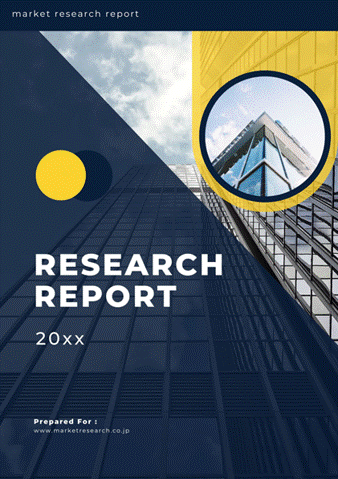 | • レポートコード:D0-MOR-AP0924 • 出版社/出版日:Mordor Intelligence / 2020年4月20日 • レポート形態:英文、PDF、90ページ • 納品方法:Eメール(受注後2-3営業日) • 産業分類:食品&飲料 |
| Single User | ¥629,000 (USD4,250) | ▷ お問い合わせ |
| Team User | ¥703,000 (USD4,750) | ▷ お問い合わせ |
| Corporate License | ¥1,110,000 (USD7,500) | ▷ お問い合わせ |
• お支払方法:銀行振込(納品後、ご請求書送付)
レポート概要
| 本調査レポートは、フィトステロールの世界市場について調査・分析した資料で、フィトステロールの市場概要、動向、セグメント別市場規模、地域別分析、競争状況、企業情報、市場機会分析などで構成されています。 |
Market Overview
The phytosterols market is forecasted to reach USD 1.01 billion by 2024, registering a CAGR of 8.6% during the forecast period (2019 – 2024).
– Phytosterols are found in fatty tissues of plants. Though they have a similar structure to cholesterol, the adsorption of phytosterols in the human body is much less, as compared to cholesterol.
– The phytosterols market is driven by the increasing consumer demand for functional food and dietary supplements, which holds potential for plant phytosterols. The launch of different products in the cosmetics industry is expected to have a positive impact on the demand for the market studied.
– North America and Europe account for more than 60% of the global phytosterols demand, and Asia-Pacific ranks as the fastest growing region.
Scope of the Report
Phytosterol is a collective term for plant-derived sterols and stanols that are found in the fatty tissues of plants. There are more than 200 different types of phytosterols, the highest concentrations of phytosterols are found naturally in beans, nuts and vegetable oils. The scope of the global phytosterol market includes various types such as beta-estosterol, campesterol, stigmasterol, and other types. By Application, the phytosterols market has been segmented into food and beverages, dietary supplements, pharmaceuticals, cosmetics, and animal feed.
Key Market Trends
Potential of Plant Sterols in Nutraceuticals
Plant sterols have potential health benefits, which has led them to be increasingly used in the pharmaceutical and nutraceutical industries. The increased demand for nutraceuticals among the consumers, is thus, driving the global phytosterol market. Phytosterols possess innumerable beneficial therapeutic properties. Hence, the concept of utilizing phytosterols as nutraceuticals is gradually emerging and gaining considerable interest.
Asia-Pacific Fastest Growing Market
Considering the geographical derivation, European countries lead the market, especially as there is an expansion of the phytosterol market in Europe, due to an increase in demand for non-GMO products. The European Union has made it mandatory for the manufacturers to label their products with the content of phytosterol in the product and that it was only for the usage of consumers with heart diseases. Asia-Pacific and North America are also likely to show significant potential during 2019-2024 due to the key benefits of phytosterols in cancer treatments as well as blood cholesterol control. T
Competitive Landscape
The global phytosterol market is competitive, with a significant presence of numerous global and regional players. ADM, BASF, DuPont, and Cargill are the leading players in the global phytosterol market. The leading companies are gaining momentum in the global market, by making increased use of tall and vegetable oils as a source of extraction. Tall oil phytosterol esters can be evenly dispersed through products, such as reduced-fat cheese. BASF, ADM, Arboris LLC, Advanced Organic Materials SA, Matrix Fine Sciences Pvt Ltd, and Lipofoods SLU are the most active companies, in terms of new product launches, expansions, and partnerships.
Reasons to Purchase this report:
– The market estimate (ME) sheet in Excel format
– Report customization as per the client’s requirements
– 3 months of analyst support
1 INTRODUCTION
1.1 Study Deliverables
1.2 Study Assumptions
1.3 Scope of the Study
2 RESEARCH METHODOLOGY
3 EXECUTIVE SUMMARY
4 MARKET DYNAMICS
4.1 Market Drivers
4.2 Market Restraints
4.3 Porters Five Forces Analysis
4.3.1 Threat of New Entrants
4.3.2 Bargaining Power of Buyers/Consumers
4.3.3 Bargaining Power of Suppliers
4.3.4 Threat of Substitute Products
4.3.5 Intensity of Competitive Rivalry
5 MARKET SEGMENTATION
5.1 By Product Type
5.1.1 Beta-Sitosterol
5.1.2 Campesterol
5.1.3 Stigmasterol
5.1.4 Others
5.2 By Application
5.2.1 Dairy Products
5.2.2 Sauces and Condiments
5.2.3 Beverages
5.2.4 Bakery and Confectionery
5.2.5 Other Processed Food
5.3 Geography
5.3.1 North America
5.3.1.1 United States
5.3.1.2 Canada
5.3.1.3 Mexico
5.3.1.4 Rest of North America
5.3.2 Europe
5.3.2.1 Germany
5.3.2.2 United Kingdom
5.3.2.3 France
5.3.2.4 Russia
5.3.2.5 Spain
5.3.2.6 Italy
5.3.2.7 Rest of Europe
5.3.3 Asia-Pacific
5.3.3.1 India
5.3.3.2 China
5.3.3.3 Japan
5.3.3.4 Australia
5.3.3.5 Rest of Asia-Pacific
5.3.4 Rest of the World
5.3.4.1 South America
5.3.4.2 Middle East and Africa
6 COMPETITIVE LANDSCAPE
6.1 Most Active Companies
6.2 Most Adopted Strategies
6.3 Market Share Analysis
6.4 Company Profiles
6.4.1 Archer Daniels Midland
6.4.2 BASF SE
6.4.3 E.I. Dupont De Nemours and Company
6.4.4 Cargill, Incorporated
6.4.5 Arboris LLC
6.4.6 Matrix Fine Sciences Pvt Ltd
6.4.7 Advanced Organic Materials SA
6.4.8 Gustav Parmentier GmBH
7 MARKET OPPORTUNITIES AND FUTURE TRENDS